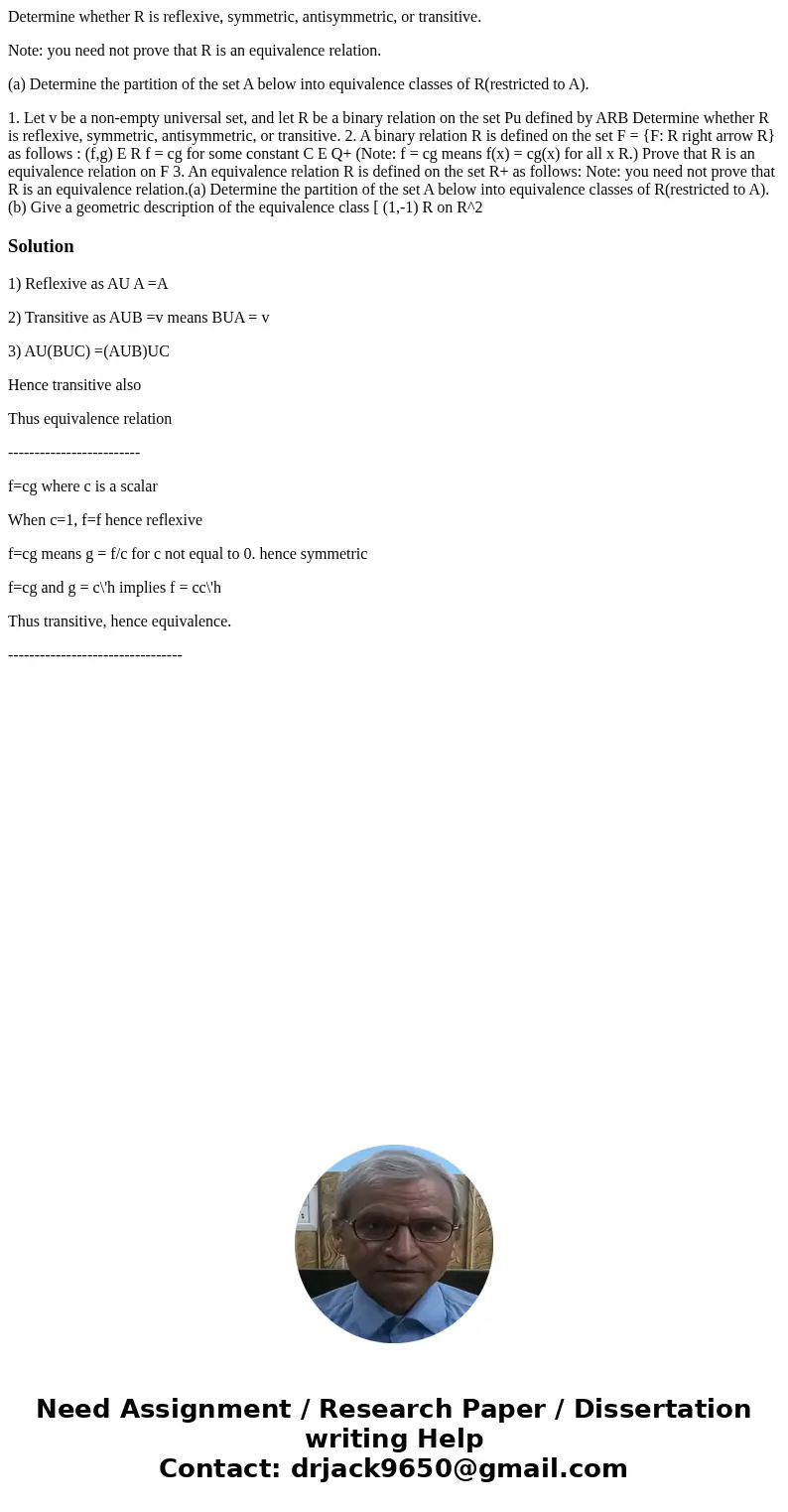Determine whether R is reflexive symmetric antisymmetric or
Determine whether R is reflexive, symmetric, antisymmetric, or transitive.
Note: you need not prove that R is an equivalence relation.
(a) Determine the partition of the set A below into equivalence classes of R(restricted to A).
1. Let v be a non-empty universal set, and let R be a binary relation on the set Pu defined by ARB Determine whether R is reflexive, symmetric, antisymmetric, or transitive. 2. A binary relation R is defined on the set F = {F: R right arrow R} as follows : (f,g) E R f = cg for some constant C E Q+ (Note: f = cg means f(x) = cg(x) for all x R.) Prove that R is an equivalence relation on F 3. An equivalence relation R is defined on the set R+ as follows: Note: you need not prove that R is an equivalence relation.(a) Determine the partition of the set A below into equivalence classes of R(restricted to A). (b) Give a geometric description of the equivalence class [ (1,-1) R on R^2Solution
1) Reflexive as AU A =A
2) Transitive as AUB =v means BUA = v
3) AU(BUC) =(AUB)UC
Hence transitive also
Thus equivalence relation
-------------------------
f=cg where c is a scalar
When c=1, f=f hence reflexive
f=cg means g = f/c for c not equal to 0. hence symmetric
f=cg and g = c\'h implies f = cc\'h
Thus transitive, hence equivalence.
---------------------------------

 Homework Sourse
Homework Sourse